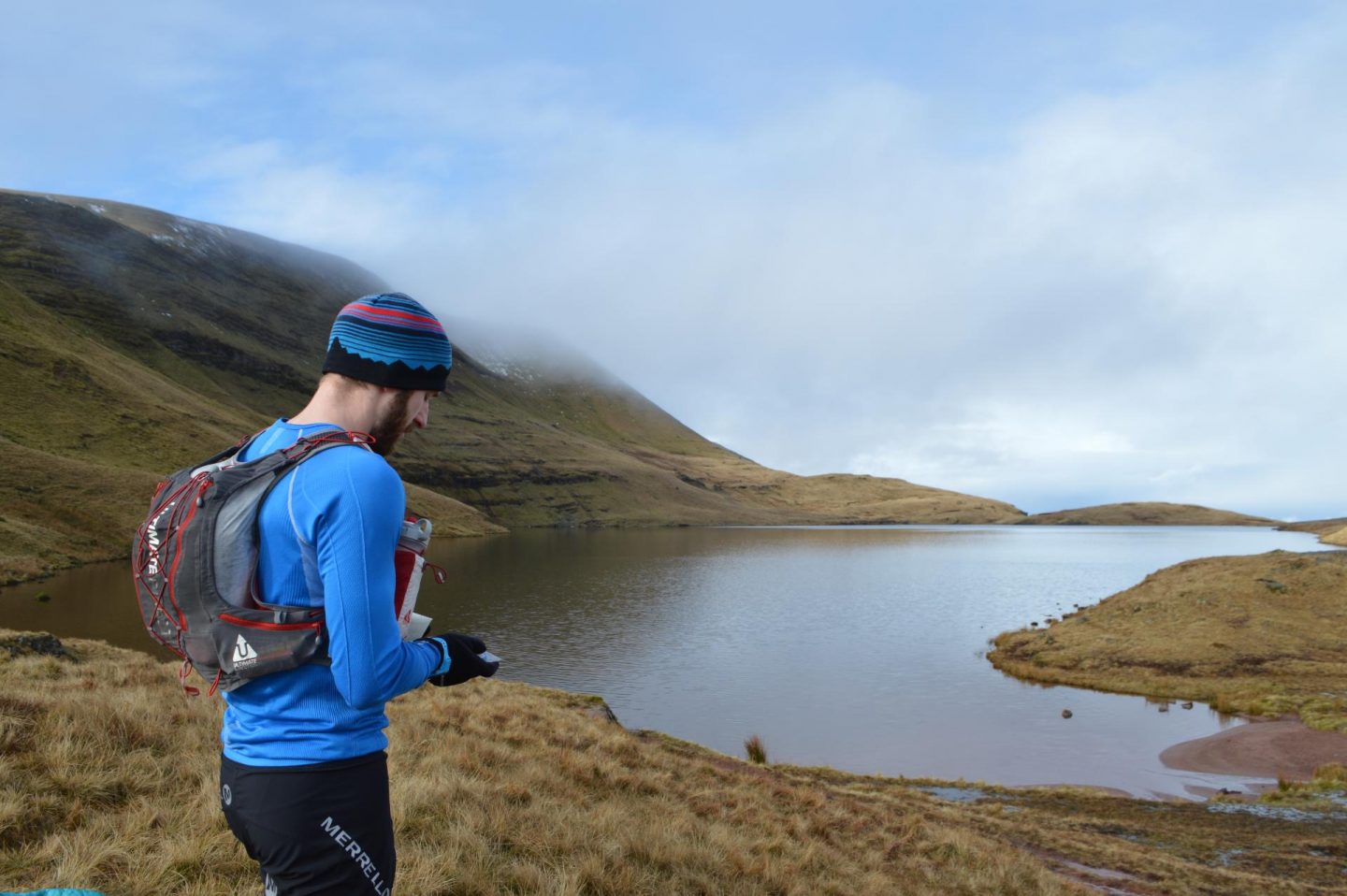
Human beings were never designed to run on tarmac. Perhaps, then, it’s natural that many runners swap pavements for wild places by taking up trail running. Jogging on woodland tracks, coastal paths and hill ridges feels far more free than road running, but if you’re used to going for a quick jog around the block, like me, then heading for the hills can be a little intimidating. I signed on for a beginner’s trail running and navigation lesson with seasoned runner and mountain instructor Jake Thompsett, and we headed out into the glorious Brecon Beacons National Park to learn the basics of trail running for beginners.
“When I run on trails it’s not about clocking a better speed or distance. It’s about the joy of being out in wild open spaces.” explained Jake, whilst jogging seemingly without effort up a steep, rocky peak. I nodded my head silently, wiping sweat and hail off my face and trying to keep up. We had come to the flanks of Fan Brycheinog. The highest peak in the Black Mountains was a towering presence above us, and rolling green valleys stretched out like a blanket below. Wales had decided to throw every arrow in her weather quiver at us, and as we followed the Beacons Way trail the bright sunshine quickly gave way to rain, then snow.

Most of Jake’s clients are runners who live near forest or open common and want to improve their confidence off the beaten track, learning to pack the right kit, map read and plan their own routes. As we half ran, half hiked up the narrow and sometimes invisible track, Jake coached me in navigation. I tried to work out where we were at given times, first stopping and poring over the pages of our OS Explorer, then trying to master the tricky skill of map-reading on the fly and learning to tick off natural waymarkers like streams and lakes to make sure we were following the right route. We used bigger features like the distant road to ‘handrail’ our way by keeping it on one side of us, a great tip for beginners trying trails.
We skirted the edge of the deep, glassy depths of Llyn y Fan Fawr lake and gained the top of the ridge. As the fog cleared, I looked down on the still lake, nestled in a valley of springy moss edged with forest and walled in by distant mountain peaks. And as we ran along the flat ridge of Fan Hir, jumping streams and boggy bits, I felt the joy of trail running, too. There’s no flat path to guide you or city streets to wall you in, just wide open breathing space, the chance to run free where you wish. By the end of the 11k route, with the welcoming Tafarn-y-Garreg pub in sight, I was mudsplashed and exhausted, but exhilarated.

Jake’s tips: trail running for beginners
1. Get the right equipment
– Footwear: Good shoes are very important. Not only do they make your run more enjoyable but you’ll be at lower risk of injury as you won’t be sliding all over the place! My favourite for the hills, mountains and loose terrain are the La Sportiva Mutant.
– Emergency/Safety: I pack a lightweight synthetic insulated jacket, a SOL Survival Bivy Bag, lightweight waterproof smock and trousers (if the weather is poor or you’re out for a long time).
– Comfort: A good quality trail running vest doesn’t bounce around on your back and ensures your equipment and water are easily accessible throughout your run. I get cold hands so also use polartec power fleece gloves for the cold days. My favourite vest for shorter runs is the Ultimate Direction PB Adventure Vest. For big days I use the Black Diamond Distance 15 l backpack.
2. Do a navigation and mountain skills course
Learning how to navigate gives you the confidence to not only head out in the first place, but to explore more remote areas and routes in our National Parks. Combine this with a developed awareness of general mountain skills such as suitable equipment and clothing and what to do in an emergency situation and your trail running adventures will be more enjoyable, responsible and safe.
3. Don’t be intimidated!
It’s not all about running uphill and making every run a hardcore fitness session. The great thing about trail and mountain running is that you can see it as a fast and light adventure that also happens to be great for your health and fitness.
4. Have an adventure and explore
Which leads me onto my next point… Use trail and mountain running as a method for exploring and adventuring in the hills and mountains. You can cover more ground, see more things, cross streams, dart through woodlands, swoop down ridge lines, run along hill tops taking in the views and vistas and generally have an epic time!
5. Clear your head and improve mental health
It’s hard to find someone that doesn’t feel better after a good dose of outside time. This couldn’t be more true for trail running. The combination of scenery and views, fitness and challenge and the feeling of adventure solo or with friends is simply idyllic.

JOIN JAKE FOR A TRAIL RUN: A full day trail running workshop with Jake Thompsett of JT Expeditions (www.jtexpeditions.co.uk) costs £75 per person (minimum group size of two). One on one coaching sessions cost £175.
Sign up for one of the best trail running events in Britain